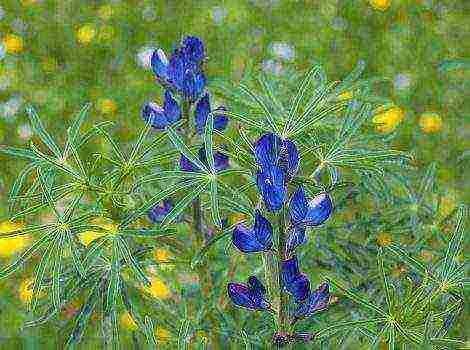Content [show]
The real national brand of the Lukhovitsky district of the Moscow region is the famous cucumber. Lukhovich residents are rightfully proud of their cucumbers, which have a long history and recognized quality. For many residents, this is a family business. Fairs dedicated to this popular vegetable are held regularly in the area. This year, on June 20, in the village of Selkhoztekhnika, the first festival "Lukhovitsky Cucumber" will take place. How the cucumber industry appeared in Lukhovitsy, and what grew out of it, the correspondent of the Lukhovitsy news agency learned.
How to grow vegetables on a windowsill >>
Cucumber fishery
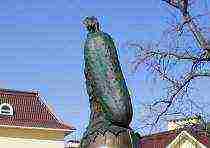 Once upon a time, local residents did not recognize "black farming" - plowing and gardening, preferring to engage in fishing, gardening, animal husbandry, various trades and trade.
Once upon a time, local residents did not recognize "black farming" - plowing and gardening, preferring to engage in fishing, gardening, animal husbandry, various trades and trade.
But at the beginning of the 30s of the twentieth century, plowing of land began in the area of the Oka floodplain, and various vegetables began to be grown on personal subsidiary plots. It was at this time in the Lukhovitsky district that a new technology began to be applied at that time - the cultivation of cucumbers in closed ground under a film on beds specially prepared since autumn.
As the historian Andrei Shablin noted in his article published in the almanac "Podmoskovny Chronicle" in 2008, this technology made it possible to obtain ultra-early seasonal cucumbers, which were in great demand in Moscow, despite the fact that they were very expensive.
At first, the cucumber industry developed only in the villages and villages lying in the floodplain of the Oka, as they say here - “at the bottom”, and since the second half of the 60s, vegetable growing has developed noticeably in the city. By the beginning of the 70s, the cultivation technology was perfected, and the volume of cucumber production reached its peak - per season, each personal subsidiary farm received an average of 30-60 tons of these vegetables.
The mass involvement of the local population in the production of cucumbers is evidenced by the article of the Lukhovitsy regional newspaper "The Way to Communism" dated September 5, 1959: there are not enough people on the state farms during the potato harvesting period, almost all residents work on their backyards and transport cucumbers to Moscow.
“Having our own car made it possible, in addition to delivering cucumbers to Moscow, to develop the markets of all neighboring regions. Lukhovitsky cucumbers also reached the northern cities: Arkhangelsk, Cherepovets. The turn of the 1970s - 1980s is considered the most profitable period for the cucumber industry. The volume of cucumber production in the Lukhovitsky region has grown to 80 thousand tons, ”the historian writes.
No wonder there is even a monument to a cucumber in Lukhovitsy. It was installed on April 1, 2006. The sculptural composition is a barrel with a cucumber on it. Excellent Lukhovitsky cucumbers are also sung in the song.
Stores will be filled with goods near Moscow in the region by August 1 >>
Quality standard
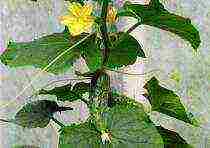 Lukhovitsky cucumber is not a variety in itself. The favorite varieties of zelentz - young cucumbers, which were cultivated 30 years ago, were the domestic "Graceful" and the hybrid of the German selection "Libelle".
Lukhovitsky cucumber is not a variety in itself. The favorite varieties of zelentz - young cucumbers, which were cultivated 30 years ago, were the domestic "Graceful" and the hybrid of the German selection "Libelle".
“There is a wide variety of varieties and hybrids of this vegetable, both Russian and foreign, in particular, of Dutch origin. To obtain real Lukhovitsky cucumbers, cold-resistant and disease-resistant ones are selected, ”said Alexander Lagutin, chief specialist of the department for work with agricultural enterprises and ecology of the Lukhovitsky district administration.
The local quality standard is an elliptical 5-7 cm long fruit with a thin, pale green skin covered with small pimples. If the cucumber was picked in the evening, then the next morning or day it should already be on the counter. Such greens are crispy, have a pronounced cucumber aroma.
“Our Lukhovitsy cucumbers also differ, in addition to the carefully observed cultivation technology, by the culture of their presentation to the counter - they are always very clean, and the fruits must be beautifully shaped and not hollow,” says Alexandra Maksimovna, a resident of the village of Vykopanka. She has been growing cucumbers for over 25 years.
Strawberry fields in the Moscow region, where you can pick berries for free >>
Cucumber certificate
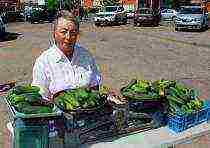 Often, under the guise of cucumbers from the Moscow region Lukhovitsy, fruits from Rostov, Ryazan or Tambov are sold in the markets. In the administration of the Lukhovitsky district, it was decided to patent the brand "Lukhovitsky cucumber". The application and the corresponding samples were sent to the Center for Hygiene and Epidemiology of Rospotrebnadzor.
Often, under the guise of cucumbers from the Moscow region Lukhovitsy, fruits from Rostov, Ryazan or Tambov are sold in the markets. In the administration of the Lukhovitsky district, it was decided to patent the brand "Lukhovitsky cucumber". The application and the corresponding samples were sent to the Center for Hygiene and Epidemiology of Rospotrebnadzor.
Positive results have come in recently. Now the complete package of documentation with the expert opinion will be transferred to the Ministry of Agriculture of Russia, and then to Rospatent to obtain a certificate of the geographical designation of the place of origin of the goods - "Lukhovitsky cucumber".
According to the head of the Lukhovitsky region, Vladimir Barsukov, in the future, those who grow cucumbers in the Lukhovitsky region will receive a special certificate. This will protect the rights of both manufacturers and buyers.
What to make from berries at home >>
Unique technology
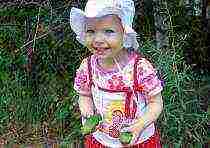 The quality and taste of Lukhovitsy cucumbers is primarily influenced by the unique microclimate of the lower reaches of the Oka: high humidity and a fairly long frost-free period - up to 135 days a year. In addition, in the lowlands, vegetable gardens are protected from cold winds, and the floodplain soils are surprisingly fertile, rich in natural organic matter and minerals from the silt brought by the river floods, experts explain.
The quality and taste of Lukhovitsy cucumbers is primarily influenced by the unique microclimate of the lower reaches of the Oka: high humidity and a fairly long frost-free period - up to 135 days a year. In addition, in the lowlands, vegetable gardens are protected from cold winds, and the floodplain soils are surprisingly fertile, rich in natural organic matter and minerals from the silt brought by the river floods, experts explain.
The traditional production technology is preserved and passed on from generation to generation by the inhabitants of the Lukhovitsky district. Long-term use of organic fertilizers such as manure, peat and compost improves soil fertility and allows you to get an environmentally friendly product.
“In our family, my grandmother and mother also dealt with cucumbers. We plant cucumbers under the foil in early spring, when there is still snow. We look after them like small children. We cover, water, ventilate, hide from the rain. As soon as the first carved leaf appears, immediately after the cotyledons, and the stalk, we transplant the seedlings into permanent beds, but also under the film. Already at the end of May, we begin the first harvest. It is important to harvest the cucumbers every other day to prevent them from overgrowing. All cucumbers are the same size as for selection. That's the whole secret, ”Inna Afanasyeva from the village of Psotino shared her experience.
Vegetable crops are sown in the Moscow region at a faster pace >>
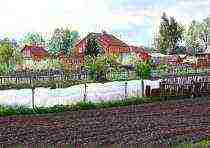 Lukhovitsky method of producing zelents, compiled on the basis of generalized information received from residents of the district:
Lukhovitsky method of producing zelents, compiled on the basis of generalized information received from residents of the district:
· The base of the greenhouse is made of straw;
· The mixture for sowing seeds is prepared from natural raw materials (humus, peat, earth, water);
· Sowing of soaked seeds is carried out in a well-insulated greenhouse;
· A month later, the seedlings are transplanted into ordinary beds, covered with foil;
Before planting, a film with slots is placed on the beds, into which seedlings are planted, which does not allow weeds to germinate;
· The optimal temperature is controlled by opening and closing the film;
· Daily watering of cucumbers;
· Picking cucumbers is performed every other day.
The cucumber festival was held in the Lukhovitsky district >>
Olga Iosipenko
India is considered the birthplace of cucumber. According to ancient chronicles, this vegetable was eaten here as early as 3 thousand BC. NS. Later, cucumbers began to be cultivated in Egypt and Greece.This is evidenced by their numerous images in frescoes. In Russia, this vegetable appeared in the 15th century and by the 16th had gained immense popularity. In our country, this culture is cultivated according to different methods, which allow to obtain a rich harvest of fruits. In the Moscow region, for example, the Lukhovitsky cucumber is extremely popular.
general description
Actually, this cucumber is not a variety. It received a separate name due to the fact that it is grown in an area with an unusual microclimate using a special technology that allows you to get a large number of small crispy neat fruits. This interesting variety of cucumber is cultivated in the vicinity of the town of Lukhovitsy in the Moscow region.
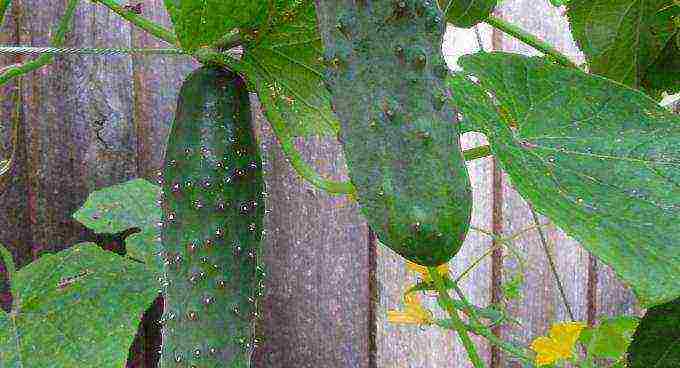
A bit of history
Peasants who once lived on the territory of the Moscow Region did not recognize black farming in most cases. They were mainly engaged in animal husbandry, various kinds of trades, fishing. However, after the revolution, large-scale plowing of lands began in the floodplain of the Oka River. Many local residents have been allocated plots for gardening. The owners of Soviet dachas drew attention to the fact that cucumbers yield the highest yields of all the crops they cultivate.
Gradually, the owners of plots located on the banks of the Oka River near Lukhovitsy have developed a special technology for cultivating cucumbers. Initially, they sold the grown vegetables in the markets of Moscow and the region. Later, the crops began to be exported by the Lukhovites to other regions of Russia.
What varieties are used in Lukhovitsy
Lukhovitsky cucumber can be grown from almost any seed in this area. The Graceful variety and the Libelle hybrid were extremely popular in this area during the Soviet years. Now in the areas of this area of the Moscow region, a variety of domestic and Dutch varieties are grown. In order to get real Lukhovitsky cucumbers, locals mainly use cold-resistant and disease-resistant varieties.
What are Lukhovitsky cucumbers
Why are zelents from this area so valued in the markets of Moscow and other cities of Russia? The ideal Lukhovitsky cucumber is a fruit that is small in size - 5-7 cm in length, absolutely even in shape, fresh, with a thin delicate crust, crispy and covered with pimples. In addition to the special cultivation technology, local residents also observe the culture of trade in such greens. A cucumber picked the day before should be on the counter by morning.
A few years ago, allegedly Lukhovitsky zelentsy began to appear in the markets of the Moscow and nearby regions, in fact, grown in the Ryazan, Rostov or Tambov regions. Therefore, the administration of the Lukhovitsky region decided to patent their cucumbers. All farmers growing this crop were obliged to receive special certificates.

Cucumber Lukhovitsky F1: description, photo, cultivation features
Not so long ago, a special variety was obtained by domestic breeders - Lukhovitsky F1. This is an early ripe cucumber of the female type of flowering, giving dark green white-thorn fruits with light stripes.
The cucumber Lukhovitsky F1 deserved very good reviews of summer residents, mainly due to its unpretentiousness and productivity. This variety is grown according to the 50x50 cm scheme. Zelentsy can reach sizes of 10-13 cm. Of course, without observing special technology, real Lukhovitsky cucumbers cannot be grown from such seedlings. However, in any case, the fruits of this variety are distinguished by good taste characteristics, have a juicy pulp and thin skin. A photo of such a cucumber is presented below.
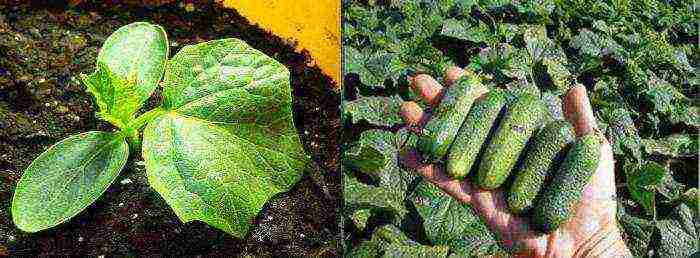
Cultivation technology
As in the last century, in the current one, the unique microclimate of the lower reaches of the Oka has a huge influence on the weight and quality of Lukhovitsy cucumbers. As before, the owners of summer cottages, thanks to the high humidity of the air and the long frost-free period, collect the richest harvests of the most delicious zelents in Russia on the fat soils of the floodplain.Lukhovitsky cucumbers are grown (photos of such fruits of different varieties can be seen in the article) using the following technology:
- Straw is laid in a dense layer at the bottom of large greenhouses. Subsequently, it will begin to rot and heat the seedlings from below.
- A special soil mixture is poured over the straw, consisting of earth, humus and peat.
- Next, the Lukhovitsky cucumber itself is planted. The seeds are soaked in water for a while and placed in a greenhouse.
- From above, the seedling greenhouse is covered with two layers of plastic wrap.
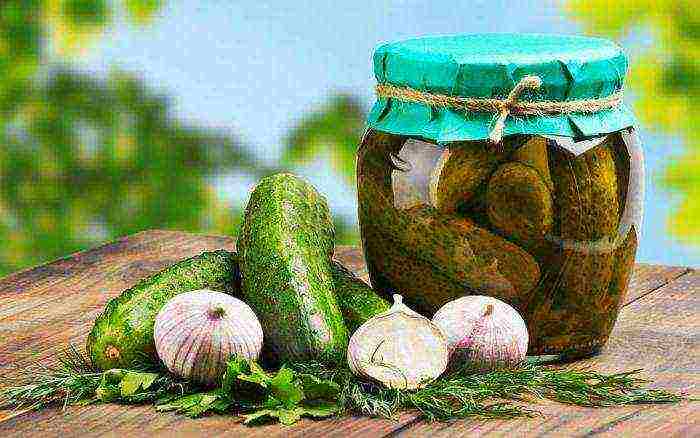
Landing is carried out using this technology in early spring, even before the snow melts. After a month, the grown seedlings are transferred to ordinary beds, covered with foil. Previously, the soil surface is mulched with a special material with slots. Subsequently, this prevents the growth of weeds.
During the cultivation of seedlings in the beds, the air temperature is manually controlled (by opening and closing the film). Of course, the cucumbers are periodically watered. Subsequently, the greens, which have reached optimal sizes, are periodically plucked (about every other day). This traditional technology of growing cucumbers has been passed down from generation to generation in Lukhovitsy families for many years.
Monument
In the Lukhovitsky district itself, they love to eat green plants grown by summer residents. They are eaten fresh, canned, and in salads. This vegetable is so popular here that they even erected a monument to him. The monument depicts a barrel with a large Lukhovitsky cucumber on top. Coins symbolizing prosperity are scattered all over the surface of the greenery. The inscription engraved on the monument reads: "To the cucumber-breadwinner from grateful Lukhovich citizens."
At first glance, such praise may seem somewhat humorous. However, in reality, everything is more than serious. This monument was erected in 2007, on the day of the 50th anniversary of the city. The administration made this decision mainly because in the difficult 90s, the vegetable that brought rich harvests became a real salvation for Lukhovich residents. In addition to the monument to the cucumber, the city also has a museum for this vegetable.

Consumer reviews
Of course, everyone who has tried Lukhovitsky juicy crispy cucumbers praises them very much. Many believe that these are the most delicious greens not only in the Moscow region, but throughout Russia. There are never voids in Lukhovitsky cucumbers, and their skin is practically absent. Previously, some fruits sold in the markets were slightly bitter. Local residents believe that the presence of a couple of such specimens per kilogram is a sign of the complete ecological purity of the product. However, since the consumer's requirements for various kinds of vegetable products have grown recently, the Lukhovich residents switched to the cultivation of special Dutch varieties. Such cucumbers do not taste bitter at all. The only drawback of these zelents is considered to be a rather high cost.
Reviews about Lukhovitsky F1
Many summer residents, of course, are interested in whether it is worth buying this variety of cucumbers. Lukhovitsky cucumber F1, judging by the opinion of many owners of summer cottages, actually has excellent qualities and perfectly imitates the fruits grown in the lower reaches of the Oka. These cucumbers are completely devoid of bitterness, are juicy, crunchy and are great for pickling.
Where can you buy
Where can you buy Lukhovitsky cucumber? The photos of these vegetables presented on the page clearly demonstrate their small size and neat shape. To buy such crispy greens grown in the Oka floodplain, today it is possible mainly only in the markets of Moscow and Moscow region. And of course, you can buy them in Lukhovitsy itself. This city is located 135 km from the capital, on the Moscow - Chelyabinsk highway.
In Lukhovitsy, this vegetable is sold by summer residents who grow it. Unfortunately, the way to the capital markets is closed for them in our time.The sale of cucumbers, lovingly grown on summer cottages in the lower reaches of the Oka, in Moscow today are only resellers. Businessmen come to villages and buy tons of vegetables that are in great demand. Of course, they are selling it very expensively in the Moscow markets. But those who travel to the capital along the Moscow-Chelyabinsk highway have an excellent opportunity to purchase crispy little greens, suitable for pickling, a little cheaper right on the highway. In the Lukhovitsy area, hundreds of summer residents-traders stand along its edges and sell their famous products.
Even fresher Lukhovitsky cucumbers can be bought in the lower villages of the region. To do this, you need to get to the market in the city and follow to the railway station. Then you should go to Krasnaya Poyma and turn to Fruktova. After a while, there will be signs along the road to the "cucumber" villages: Gretovo, Ivnyagi, Psotino, etc.

How to salt Lukhovitsky zelentsy correctly
All varieties grown in this area are distinguished by excellent taste characteristics not only fresh, but also being canned. Including the cucumber Lukhovitsky F1, which has earned good reviews from summer residents. Using zelents from the lower reaches of the Oka for salting allows you to get ecologically clean tasty preparations for the winter. You can preserve the greens grown in this area by any means. Every housewife will surely have a variety of techniques. But the Lukhovites themselves ferment their cucumbers as follows:
- The greens plucked from the garden are thoroughly washed.
- Cucumbers are put in sterilized jars.
- A brine is prepared with the addition of spices and salt.
- Pour it into jars.
- Cucumbers are placed in a warm, dark place for 2-3 days.
After the foam appears, the cans are closed with plastic lids and placed in the basement.
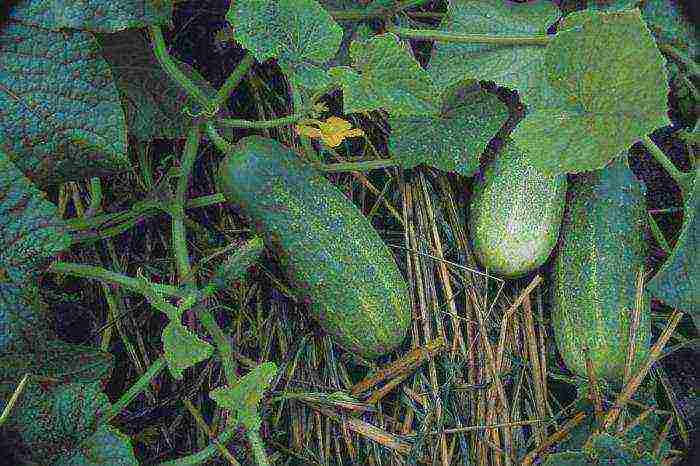
Unfortunately, due to marketing difficulties, such an occupation as growing cucumbers in the Lukhovitsky district is gradually losing popularity these days. Mainly only pensioners are engaged in the cultivation of this culture. According to forecasts of some researchers, within 15-20 years, "cucumber production" in this area may completely disappear. We hope that this will not happen after all. After all, Lukhovitsky cucumber is actually distinguished by truly unique taste characteristics and, moreover, absolute ecological purity. The same cannot be said about many vegetables grown according to newfangled technologies in greenhouses and greenhouses of large farms in other parts of the country.
The beginning of June, and the first cucumbers have already appeared in Lukhovitsy. First, 80 rubles per kilogram. A week later - 60 rubles. A week later - for fifty dollars. The wholesale price for dealers buying cucumbers with Gazelles is even lower. This is the first harvest. In a month, the cucumbers will ripen among summer residents and in the surrounding areas. They will fill the entire Lukhovitsky district and Moscow markets. If you focus on last year, then from mid-July it will be possible to buy freshly picked cucumbers in Lukhovitsy for 10-15 rubles. In Moscow, the price is always 2-3 times higher. And since the Lukhovitsky cucumber is a kind of brand and a guarantee of quality, the metropolitan traders from the southern republics are ready to pass off any cucumbers for it, even those brought from afar, if only there was a similarity in shape.
Passing through the villages of the Lukhovitsky region, past local traders only with cucumbers picked from the beds, we could not resist. They did not calculate the strength and bought these tasty, appetizing, the same small size with tender seeds inside and distinct green pimples of cucumbers more than necessary. Such is human nature. When you see a delicacy product that cannot be bought in stores, you always want to take it with a margin. And thoughts about a short shelf life fade into the background. It is only at first glance that there is nothing delicious in a cucumber. Until you see only small pickled cucumbers.
Arriving home, we were not taken aback. Some of the cucumbers were immediately salted.Lightly salted cucumbers are a great culinary find. July will come, the price of cucumbers will drop, then it will be possible not only to eat enough, but also to prepare pickled cucumbers for the winter.
Lukhovitsy - the city of the Moscow region, located on the 135th kilometer of the Moscow - Chelyabinsk highway, approximately halfway between the cities of Kolomna and Ryazan. Lukhovitsy is an industrial city. The city-forming enterprise is a machine-building plant, which produces aviation equipment. There are other industrial and food industries.
But the popularity of this city was nevertheless brought by ordinary cucumbers. Or extraordinary? Why is Lukhovitsky cucumber so famous? Why is he known, recognizable and loved throughout the Moscow region, and possibly beyond?
The heyday of the cucumber business came in the 1990s. When enterprises stopped in the country, salaries were delayed, there was inflation. In order to feed themselves, people started to farm. It has long been known that cucumbers grow very well in these parts. In Lukhovitsy, precipitation is extremely rare, there are many warm sunny days. I think this is due to the fact that clouds often get stuck in Kolomna, where the Moskva River flows into the Oka. This interweaving of rivers attracts clouds like a magnet and all the rains pour out there. Apparently this climate is conducive to cucumber growth. In Soviet times, few people thought about growing cucumbers for sale on a huge scale in Lukhovitsy. But in difficult times, the local population relied on cucumbers.
A large area of land is allocated for cucumber crops, more than half of the vegetable garden. Cucumbers are planted under the film in early spring. They take care of them like small children: they are additionally covered in frost, poured over with warm water. In the summer, constant watering is also required. Already at the end of May, the first harvest begins. Cucumbers are harvested every other day, preventing them from overgrowing. This is the secret of the Lukhovitsky cucumber. All the same size as for selection.
Oddly enough, only ordinary residents are engaged in cucumbers in Lukhovitsy. On the state farm fields of the Lukhovitsky region, potatoes, cabbage and grass with sunflowers and corn are grown for livestock feed.
At the same time, as local residents said, there is no one Lukhovitsky variety of cucumbers. People experiment, every year they try new varieties and leave the most successful ones for mass sowing. Now the locals are popular with Dutch varieties of cucumbers.
Cucumbers are grown in every household. But the best harvests are in the floodplain of the Oka River. At the bottom, as the locals say.
Previously, residents themselves transported cucumbers to Moscow for sale. Now the entrance to the capital markets is closed for them. All places were taken apart by dealers who go to Lukhovitsy on Gazelles, drive through the villages, enter every yard and fill a full car with cucumbers.
Price wars occur periodically. Lukhovich residents want a decent price for their products. Dealers knock down the price, taking advantage of the fact that residents have no one to sell perishable goods besides them.
If you drive through Lukhovitsy in your private car in the summer, be sure to buy cucumbers. They are sold along the entire route. If you want a cheaper price, go to the market, which is open from early morning until 14-15 pm. The market is located near the Lukhovitsy railway station. Coming from Moscow, at the main intersection, turn left onto Pushkin Street. This intersection is impossible to drive past. On the right side there is a monument to the Cucumber-breadwinner, on the left McDonald's - a symbol of our time. And above the main road there is a banner: “There are three capitals in Russia - Moscow, St. Petersburg, LUKHOVITSY!”. Take the main road and in a few minutes you will be there.
Better yet, in search of cucumbers, make a small detour and drive through the lower villages. So, having reached the market and resting against the railway station, turn right and go to the railway crossing.After moving straight along the main road to Krasnaya Poyma, there is a turn to Fruktovaya. Soon the famous cucumber villages Dvuglinkovo, Goretovo, Vykopanka, Psotino, Ivnyagi will begin. There, in front of almost every house, there is a stump or a chair on which 1-2 cucumbers are laid out. Stop, call the owner, ask the price. In season, in addition to cucumbers, you can buy zucchini, tomatoes, cabbage, carrots, apples, cherries. Everything from your garden and garden.
When buying cucumbers in the village, you can ask for a bouquet of horseradish, dill, currant and cherry twigs. And a head of young garlic.
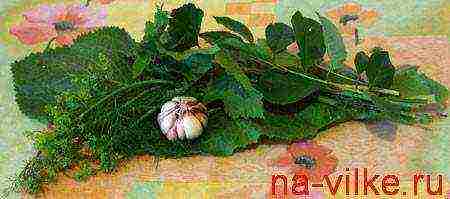
On a warm sunny day, before reaching Fruktova, you can stop on the banks of the Oka River, find a convenient entry into the water with a small beach and swim.

Before Fruktova, leave again through the railway crossing and return to the highway. I warn you that you will drive about 30 extra kilometers. The main thing is not to get stuck at level crossings for a long time. But here, how lucky.
Lukhovitsy are also famous for their quarries, better known as the Blue Lakes. There are already 7 of them. The places are picturesque. But with the popularity and constant influx of tourists, bards and vacationers, the quarries are littered with garbage and gradually come to a deplorable state. Last year's fires also burned part of the forest around.

I propose to see a few more photos taken in Lukhovitsy.
Crossroads at the intersection of Novoryazanskoye Highway with Pushkin Street. Here in 2007 a monument to the Cucumber-breadwinner was erected in front of the shopping center.

The inscription on the monument reads: “To the cucumber-breadwinner from grateful people of Lukhovich”.
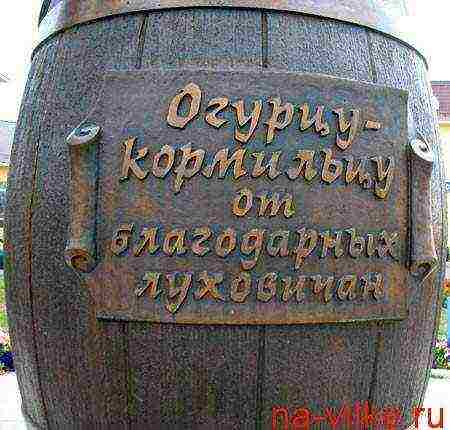
Also in Lukhovitsy is the Cucumber Museum. If, driving from Moscow, at the crossroads, turn right towards Zaraisk, drive through town houses, find yourself on the outskirts, then on the left side near one of the wooden houses you can see a self-written sign “Cucumber Museum”. The people of Lukhovich love and perpetuate the cucumber-breadwinner.
Here is the famous Lukhovitsky phrase over the Novoryazanskoe highway.

Earlier, during the heyday of cucumber glory, this phrase sounded a little differently: “There are only three capitals in the world: Paris, Moscow and Lukhovitsy”. The variation “There are three capitals in Russia: Ryazan, Moscow and Lukhovitsy” is also known.
There is a local history museum near the railway station and the market. Near the museum there is a monument to Peter I.
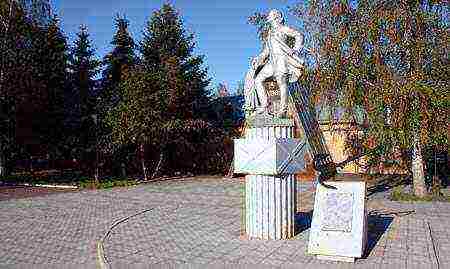
A little further away near the Black River is the Alley of Glory.
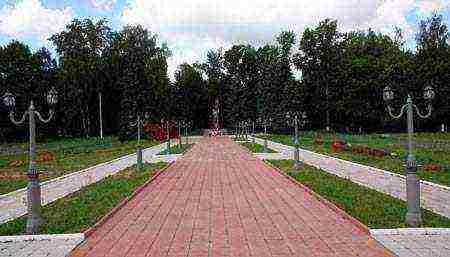
Military equipment is displayed next to the Alley: 2 planes, a tank, cannons, mortars.
And a few more banners and billboards, testifying to the good sense of humor of the locals:
Heron with a frog in its beak, the coat of arms of the city and the slogan “Never give up”.
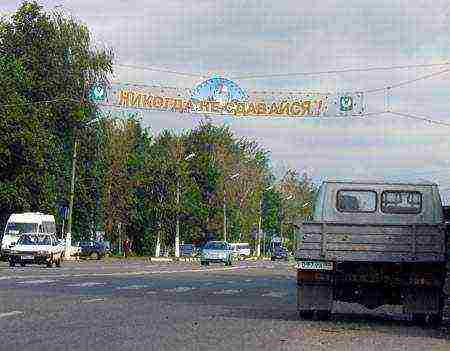
Just outside the city there is a small river with the capacious name Voblya.
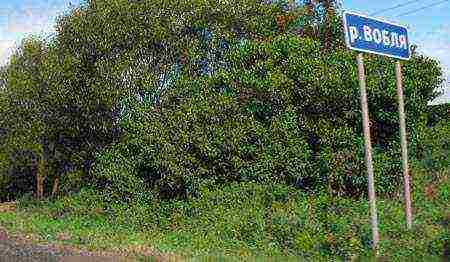
And here the resourceful entrepreneurs have placed their billboard.
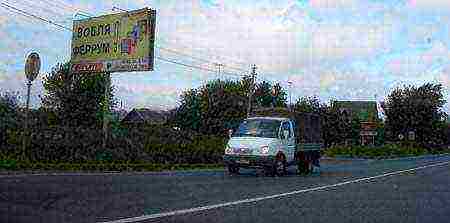
As one of the local residents told me, in the distant, ancient times, this river overflowed strongly in the spring, flooding the nearby villages. Everyone exclaimed: "Wo, shit!". This is how the river got its name. Whether it's true or not, I don't know. I liked this legend. Therefore, we will assume that this was indeed the case.
On this cheerful note, let me finish my walk through the Moscow Region Lukhovitsy. Pour a glass of cold vodka and remove salted Lukhovitsky cucumbers from the refrigerator.
To find out if you liked the article or not, please click the social media button or leave your comment below. Thank you!
We continue to talk about small towns in Russia. And today we will talk about the Lukhovitsy of the Moscow region. Some call this settlement the third capital of the country, others - also the capital, but of cucumbers and aircraft construction. The role of a small town in the history of a large country is in our report.
There are three capitals in Russia: Moscow, St. Petersburg, Lukhovitsy. Every local resident knows this proverb, but no one knows where it came from. It is difficult to call Lukhovitsy a capital city: the houses are not high, there are not so many enterprises, and the population is slightly more than 30 thousand people.
If Lukhovitsy is the capital, then only the aircraft industry. The largest aircraft plant in Russia is located here., on which the world-famous MiG-29 aircraft are assembled.
In a small station village, a secret defense production appeared in 49. After the war, a field airfield remained here, which they decided to use for aircraft testing. Since then, life in Lukhovitsy has begun to boil. The best Soviet engineers and aircraft designers came to work at the plant, the population increased by 4 times, and the modest village became a developing city. 70% of the housing stock Lukhovits built a plant.
Vladimir Kogtev, ethnographer: “Either grandmother or grandfather worked at the factory. That is, each Lukhovits family is associated with the plant. "
Vladimir Viktorovich's father worked at the plant. At the best of times, they produced 16 aircraft per quarter. Today the same number - a year.
Vladimir Kogtev, ethnographer: “Both day and night tests of engines, engines and the aircraft themselves were carried out. And this, of course, annoyed the residents. Imagine, humming all the time, humming and humming! It was in the 70s. Then there was a lull. And now the residents are happy when the planes are buzzing. Why? Because if they are buzzing, then they are rolling, once they are rolling, they will be sold, once they are sold, then the residents will receive money, go to the store and buy something. Everything".
Traditionally, residents of Lukhovitsy earned in two ways: either they worked at a factory, or ... they sold cucumbers. Lukhovitsky cucumber is perhaps the most famous vegetable in Russia. A monument was even erected to him in the city 7 years ago.
Alevtina Ivanova, pensioner: “These are not cucumbers, but gold! Lukhovitsky cucumber is the best cucumber in Russia ”.
In Soviet times, cucumbers were indeed golden. They were transported in sacks to Moscow and neighboring cities for sale. The trade was going so well that during the summer season the borage could make money on the Volga! Profit is not the same today. Second-hand dealers take the products from the locals and sell them at exorbitant prices in Moscow. But cucumbers for Lukhovitsk life are still a help.
Alevtina Ivanova, pensioner: “All the same, I will sell for 500 rubles, well, 800 rubles. This is a great support for a pensioner. And every pensioner tries to plant, sell ”.
Local residents are proud of cucumbers, but when their city is associated only with vegetables, they take offense. They say that without cucumbers there is something to see in Lukhovitsy.
12 kilometers from the city in the village of Dedinovo, even before Peter the Great, under his father, Tsar Alexei Mikhailovich, the first state ship in Russia was built under the leadership of the Dutch. Here, on the first state ship, the colors of the Russian tricolor were announced for the first time.
Sergey Kochetkov, historian: "They were approved when the question arose under which flag the new ship should be launched."
The captain of the ship David Butler wrote to Moscow: "What flag should I go under?" And he was told three colors: scarlet - dark red, azure - blue and white. Therefore, Dedinovo is the birthplace of the Russian state flag, and I congratulate all of us on this! "
On an excursion, the residents of Lukhovich take guests to Dedinovo, and on vacation - to the blue lakes. They say that such clear water as in local quarries cannot be found in the entire region. However, after the 2010 fires, the amenities on the blue lakes have diminished. Cafes, changing rooms, garbage cans and toilets were burnt down. On weekends, there is no free space on the beach, and there is nowhere to change.
Oleg Kharitonov, local resident: “The authorities did not arrange it for recreation. There are no toilets, trash containers. All this remains here in nature. Children go and clean. Well, not every day, but they do it. And so - there were garbage pits. Nobody wants anything! "
Schoolchildren cherish the local nature, but only up to grade 11. Then almost all of them had a plan to leave. There are no higher educational institutions in Lukhovitsy, the options for work are an aviation or flour mill.
Nadia, 11th grade graduate: “The advantages are that we are close to nature, we have lakes and forests here.We can get together on any weekend with tents, otherwise there are no opportunities to work and study. Wouldn't advise. "
Vika and Nadya finished 11th grade this year and immediately applied to Moscow universities. No one remains from their parallel in their small homeland. Although in the old saying Lukhovitsy is called the capital, young people prefer larger capitals to them.
There are many versions about the origin of the name of this city. According to one of them, the settlement was first named Glukhovichi, as it was located in a remote place surrounded by a forest. Then the name, influenced by the local dialect, was transformed into Lukavitsy, and even later into Lukhovitsy.
The development of the village began only after the construction of the railway - at the end of the 19th century. And already in 1957 the workers' settlement received the status of a city.
